For more than ten years, WeForest and IPÊ (Institute for Ecological Research) have worked side by side in Brazil’s Atlantic Forest. Their mission? To prove that restoring nature can also restore livelihoods. And in the fragmented landscape of Pontal do Paranapanema, São Paulo State, they’ve done exactly that.
At the heart of this work is the Wildlife Corridors Project, an ambitious effort that is reconnecting critical forest habitats, boosting biodiversity, and sparking new economic opportunities for local communities. It’s living proof that environmental recovery and human well-being can grow together.
Guided by IPÊ’s visionary “Dream Map”—a plan to restore 75,000 hectares of vital corridors by 2041—the initiative has already revived 6,068 hectares. What’s more, it has created a replicable model for large-scale restoration across tropical landscapes.

From fragmented forests to thriving ecosystems
Before the project began in 2014, decades of agricultural expansion had stripped the Pontal region of over 16,000 hectares of native vegetation. But a decade of restoration has begun to reverse that legacy:
- 6,068 hectares restored: 1,306 of them directly supported by WeForest.
- Forest fragments increased from 423 to 722: improving connectivity by up to 187% in key areas.
- 317 plant species recorded: including 13 threatened species such as rosewood (Aspidosperma polyneuron) and Spanish cedar (Cedrela fissilis).
- 262 animal species were documented: from the endangered black lion tamarin (Leontopithecus chrysopygus) to the lowland tapir (Tapirus terrestris).
Even when early planting efforts faced setbacks from drought and invasive grasses, the Atlantic Forest showed its resilience. Natural regeneration in young restoration sites (1–3 years old) often exceeded expectations. And with restored areas now storing 28,460 tCO₂e, the project is also locking away carbon and helping to mitigate climate change.
People at the heart of restoration
Beyond biodiversity, the project’s most enduring impact may be its socioeconomic legacy. By building a local restoration economy, IPÊ and WeForest have turned conservation into a source of jobs, skills, and pride:
- Nurseries expanded from 5 to 13, while planting companies grew from 4 to 15.
- 229 direct jobs created by 2024, with women making up 28% of the workforce (mostly in nurseries).
- Over 500 people benefitting indirectly through seedling production and related activities.
Nurseries alone saw a dramatic leap—from producing 10,000 seedlings a year to 1 million—and women are now leading many of these teams. Landowners, once hesitant, are embracing restoration after seeing visible improvements on their land.

WeForest’s role: steady support, lasting results
Over the decade, WeForest provided more than US$2.6 million in funding, alongside technical guidance and independent monitoring. Co-financing from São Paulo’s Nascentes Program helped stretch those funds even further.
Lessons learned along the way, like the importance of clear communication and flexible funding, helped shape the project into a success story that others can follow. The transition from fragmented individual efforts to an organized restoration chain stands as one of the initiative’s most significant achievements.
What’s next
With its foundation strong, the Wildlife Corridors initiative is entering a new phase. IPÊ’s Verra-certified “Corridors for Life” carbon project, validated in 2023, will channel carbon finance into accelerating the Dream Map’s goal of restoring 75,000 hectares by 2041.
For WeForest, this marks a natural conclusion, the point where a partner is strong enough to stand on its own. For IPÊ, it’s the start of an even more ambitious chapter.













